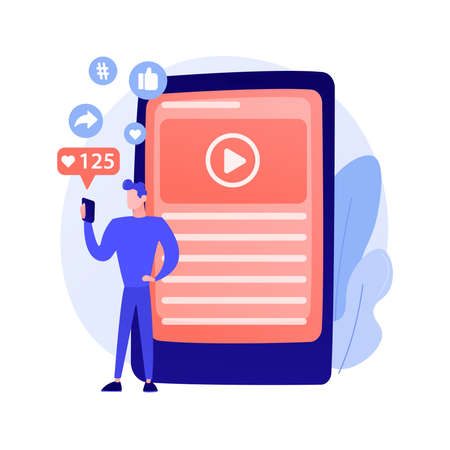1. Understanding the Link Between Twitter and SEO
If you run a small or local business in the US, you might wonder how your Twitter activity can actually help your website show up better in Google searches. In today’s digital world, search engine optimization (SEO) is not just about keywords and backlinks—social media plays a big part too, especially platforms like Twitter.
How Does Twitter Affect Your Website’s SEO?
When you post on Twitter, share links to your website, and engage with your audience, you’re creating digital signals that Google and other search engines notice. These signals can indirectly boost your site’s authority and visibility online. Here’s how it works:
| Twitter Activity | SEO Impact |
|---|---|
| Sharing website links | Increases chances of getting more traffic and earning backlinks |
| Using popular hashtags | Makes your tweets more discoverable, leading to higher engagement |
| Engaging with influencers | Can attract more followers and shares, expanding your brand reach |
| Consistent posting | Keeps your brand active in conversations, which search engines value |
Why Is This Important for US Businesses?
The American market is highly competitive online. If your business is active on Twitter and interacts with customers or local communities, you have a better chance of building trust and authority—not just with people, but also with search engines. When people talk about your brand or share your content on Twitter, it sends positive signals that can boost your website’s ranking.
Key Takeaway for Small Businesses:
Your tweets are not just posts—they are opportunities to get noticed by both customers and search engines. The more active and engaged you are on Twitter, the more likely it is that your website will gain visibility and authority in search results across the US digital landscape.
2. Optimizing Your Twitter Profile for Local Branding
Why Your Twitter Profile Matters for Local SEO
Your Twitter profile is often the first impression your brand makes online. When people search for local businesses or services, a well-optimized Twitter account can help your brand show up in both social and web search results. This means more eyes on your business from people in your area.
Key Elements to Optimize for Local Branding
| Element | How to Optimize for Local SEO |
|---|---|
| Twitter Handle (@username) | Include your city or region if possible. For example, @AustinBakery or @NYC_TechHelp make it clear where you’re based. |
| Display Name | Add your business name plus location, like “Joe’s Pizza | Chicago.” This helps search engines and users connect you with your area. |
| Bio | Mention your service area and use local keywords. Example: “Serving fresh bagels to San Diego since 1999.” Add popular neighborhood names or city nicknames too. |
| Profile Image & Banner | Use recognizable local imagery—like city skylines, landmarks, or even team colors—to visually anchor your brand to the region. |
| Location Field | Be specific! List your city, neighborhood, or region so you appear in local searches (e.g., “Downtown Seattle, WA”). |
| Website Link | If you have a location-specific landing page, link directly to it for better tracking and relevance. |
Tips for Regional Search Discovery on Twitter
- Use Hashtags Wisely: Mix trending local hashtags (like #HoustonEats) with industry keywords to boost visibility.
- Tag Local Partners: Mention nearby businesses or organizations in tweets to expand your reach in the community.
- Pin a Local-Focused Tweet: Keep an event announcement, offer, or intro tweet about your business in the region pinned at the top of your feed.
- Stay Active in Local Conversations: Join discussions around local events, news, and trends using reply tweets or quote tweets.
Example: Optimized Twitter Bio for Local Business
@DenverPetCare
“Friendly pet grooming serving Denver’s Capitol Hill & Cherry Creek neighborhoods. Book online or call us today! 🐾 #DenverPets”
Location: Denver, CO
Link: www.denverpetcare.com/capitolhill

3. Crafting Shareable Content to Drive Engagement
Why Shareable Content Matters for SEO on Twitter
Creating tweets that your followers want to share helps spread your brand message and signals to search engines that your content is valuable. When your posts get shared, they reach more people in your local area and beyond, building both your brand awareness and online authority.
Types of Content That Spark Conversations
| Content Type | Description | SEO Benefit |
|---|---|---|
| Tweets with Questions | Ask open-ended questions related to your industry or community. | Encourages replies, increasing engagement rates that boost social signals. |
| Local News & Trends | Share updates about local events or trending topics in your city or state. | Makes your brand relevant to local searches and builds community connections. |
| Visuals (Images, GIFs, Videos) | Use eye-catching photos, short videos, or animated GIFs showing products, behind-the-scenes, or local landmarks. | Increases shareability and time spent viewing your tweets. |
| Twitter Threads | Create a series of connected tweets telling a story or sharing tips. | Keeps followers engaged longer and encourages retweets of the entire thread. |
| User-Generated Content | Retweet or feature content from customers using your product locally. | Builds trust and motivates others to engage with your brand. |
Tips for Making Your Tweets More Shareable
- Keep It Short & Sweet: Tweets with clear, concise messages are easier to understand and share.
- Add Local Flavor: Mention local businesses, landmarks, or use region-specific hashtags to connect with nearby audiences (e.g., #HoustonEats).
- Use Emojis & Hashtags Wisely: A few relevant emojis and targeted hashtags make tweets more discoverable without looking spammy.
- Tag Others: When appropriate, tag local influencers or partner businesses. This increases the chance they’ll share your post with their followers.
- Post at the Right Times: Tweet during hours when your local audience is most active—typically early mornings, lunch breaks, and evenings.
Sample Tweet Ideas for Local Businesses
| Tweet Example | Purpose |
|---|---|
| “What’s your favorite way to enjoy our BBQ on a sunny Dallas day? Let us know below! 🌞🍖 #DallasEats” | Sparks conversation and uses a local hashtag to boost reach. |
| “We’re proud to support this weekend’s charity run in downtown Seattle! Who’s joining us? 🏃♀️ #SeattleEvents” | Taps into a local event and invites community participation. |
| “Check out this behind-the-scenes look at our bakery prepping fresh bagels this morning! 🥯 #NYCBakery” | Shares an authentic visual moment tied to location-based search terms. |
Create Visuals That Stand Out
- Add Your Logo: Place your business logo subtly on images so shares still point back to you.
- Highlight Local Scenes: Use recognizable spots in photos or videos to create hometown pride and familiarity.
The more you craft tweets that get shared by real people in your area, the more you strengthen both your brands visibility and its SEO authority. Engaged communities send positive signals that help search engines notice you as a trusted resource in your field and region.
4. Leveraging Hashtags and Trends to Expand Reach
One of the most effective ways to boost your brand’s SEO authority on Twitter is by using hashtags and trending topics smartly. When you tap into what’s popular or locally relevant in the US, you can reach more people who care about what your business offers. Here’s how to use hashtags and trends to expand your brand’s influence.
Why US-Specific Hashtags Matter
Hashtags help users discover content related to their interests. Using US-specific hashtags connects your tweets with American audiences, increasing your chances of showing up in their searches or feeds. For example, #ShopLocalUSA or #SupportSmallBusinessUS can attract Americans looking for local brands.
Best Practices for Using Hashtags
| Do | Dont |
|---|---|
| Use 1-3 relevant hashtags per tweet | Avoid overloading tweets with too many hashtags |
| Research trending US hashtags daily | Don’t use unrelated or spammy tags |
| Create branded hashtags for campaigns (e.g., #YourBrandUSA) | Don’t use only generic global hashtags—mix local with broad ones |
| Capitalize each word for readability (#MadeInAmerica) | Avoid long, hard-to-read hashtags (#thisisaverylonghashtag) |
Tapping Into Trending Topics
Every day, Twitter features new trending topics that capture people’s attention across the US. By participating in relevant trends, your brand can join larger conversations and gain visibility among target customers. For example, if a holiday like Independence Day is trending, you can share a tweet with a thoughtful message and a hashtag like #July4thSales or #IndependenceDayDeals.
How to Find Trending Topics in the US
- Check Twitter’s “Trending” section and set your location to a US city or region.
- Follow industry influencers and observe which topics they are discussing.
- Use tools like Trendsmap or Hashtagify to discover real-time US trends.
Example: Localizing Your Tweets for Better Engagement
| Generic Tweet | Localized US Tweet |
|---|---|
| “Check out our summer sale!” #Sale #Discounts |
“Celebrate summer with us—special savings for our neighbors in Austin!” #AustinTX #ShopLocalUSA #SummerSale2024 |
| “Our new product just launched!” #NewProduct #LaunchDay |
“Proud to launch our newest product right here in Chicago!” #ChicagoBusiness #MadeInUSA #LaunchDay2024 |
By consistently using US-specific hashtags and joining conversations around trending topics, you’ll not only increase your brand’s reach but also enhance its relevance and authority in search results—both on Twitter and across Google.
5. Building Relationships with US Influencers and Customers
Why Connect with Influencers and Followers?
To make your brand stand out in the US market, it’s important to build real connections on Twitter. Working with influencers and engaging your customers can help you earn valuable backlinks, get people talking about your brand, and boost your SEO authority. These steps not only increase your visibility but also make your brand feel more local and trustworthy to American audiences.
How to Engage Influencers on Twitter
- Identify Relevant Influencers: Look for US-based Twitter users who have a strong following in your industry or local community.
- Start with Genuine Interactions: Like, retweet, and comment thoughtfully on their posts before reaching out directly.
- Mention Influencers in Your Tweets: Share their content or quote them (with @mentions) to grab their attention.
- Offer Value: Propose collaborations that benefit both parties, like guest tweets, co-hosted Twitter Spaces, or shoutouts.
Influencer Outreach Example Table
| Step | Action | US Market Tip |
|---|---|---|
| Find Influencers | Use hashtags like #SmallBizUSA or #NYCMarketing | Focus on location-specific tags for local reach |
| Engage Publicly | Retweet their posts, reply to threads | Add thoughtful comments relevant to US trends |
| Direct Message | Send a friendly intro and collaboration idea | Mention what you admire about their work in the US market |
Getting Backlinks and Brand Mentions from US Audiences
- Create shareable content tailored for American interests—think guides, infographics, or quick tips about your industry.
- Tag local businesses and influencers when sharing these resources to encourage retweets and links back to your website.
- If an influencer mentions your brand, politely ask if they’d consider linking to your site in a blog post or resource list.
User Engagement Tips for Growing Authority
- Host regular Q&A sessions or polls about topics US customers care about.
- Acknowledge followers by liking and replying to their comments—show you value their input.
- Create Twitter threads that answer common questions from US customers; this encourages shares and saves.
Quick Checklist: Building Relationships on Twitter
- [ ] Identify 10-15 potential US influencers each month
- [ ] Interact publicly at least 2 times per week with each influencer
- [ ] Run a monthly poll or Q&A targeting US followers’ interests
The more you interact authentically with influencers and customers in the US on Twitter, the more likely you are to gain backlinks, mentions, and trust—all of which help improve your SEO authority locally.
6. Tracking Twitter Metrics for SEO Improvement
When it comes to boosting your brand’s SEO authority with Twitter, tracking the right metrics is key. By keeping an eye on Twitter analytics, you can see what’s working and where you need to adjust your strategy—especially if you’re a local business looking to grow both online and in your community.
Key Twitter Analytics for SEO
Not all Twitter stats are created equal when it comes to SEO. Here are the main metrics you should track:
| Metric | Why It Matters for SEO |
|---|---|
| Impressions | Shows how many times your Tweets are seen; higher visibility increases chances of earning backlinks or shares. |
| Engagement Rate (likes, replies, retweets) | Measures how people interact with your content; strong engagement signals value to search engines. |
| Link Clicks | Tells you how often people visit your website from Twitter; helps connect social activity to website traffic growth. |
| Follower Growth | A growing local follower base can boost brand trust and authority in your area. |
| Mentions & Brand Tags | Indicates your brand’s reach and reputation, which can influence local search rankings. |
Best Tools to Measure Twitter’s Impact on SEO
You don’t have to be a tech expert to track these numbers. Here are some user-friendly tools that small businesses can use:
| Tool Name | Main Features | How It Helps with SEO & Local Growth |
|---|---|---|
| Twitter Analytics (built-in) | Free, easy-to-use dashboard with all basic metrics. | Track what content works best and adjust posts for more clicks and shares. |
| Google Analytics | Monitors website traffic sources, including social media referrals. | See exactly how many visitors come from Twitter and which tweets drive the most visits. |
| Hootsuite / Buffer / Sprout Social | Schedule posts, track engagement, compare performance over time. | Simplifies reporting and helps plan content that supports both brand awareness and SEO goals. |
| Mention / Brand24 | Tracks mentions of your brand across Twitter and other platforms. | Keeps you in the loop on local conversations about your business and highlights backlink opportunities. |
Tips for Local Businesses: What to Watch For
- Local Hashtag Performance: Track which community or city hashtags attract attention and engagement. Use these in future tweets to reach more nearby customers.
- User-Generated Content: See if locals tag your brand or share photos. This can increase trust among new customers and support local SEO signals.
- Citation Opportunities: If local news outlets or bloggers mention your business on Twitter, follow up for potential backlinks or press coverage—both great for SEO!
If you keep tabs on these Twitter metrics using the right tools, you’ll have a clear picture of how your social efforts support both your search engine rankings and your presence in the local market. Consistent tracking makes it easier to spot trends, double down on what works, and prove the value of social media as part of your broader digital strategy.


